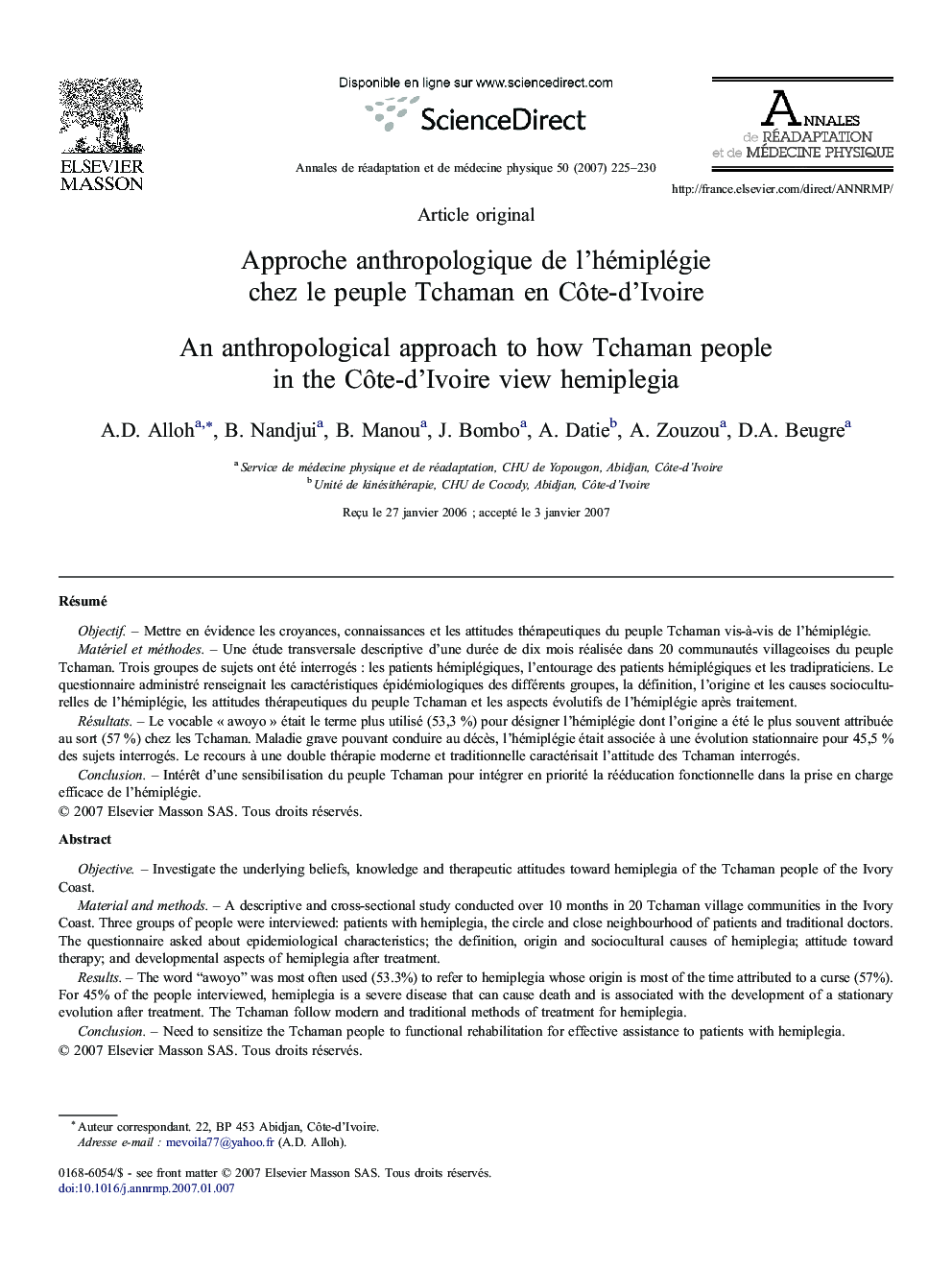| Article ID | Journal | Published Year | Pages | File Type |
|---|---|---|---|---|
| 4040266 | Annales de Réadaptation et de Médecine Physique | 2007 | 6 Pages |
RésuméObjectifMettre en évidence les croyances, connaissances et les attitudes thérapeutiques du peuple Tchaman vis-à-vis de l'hémiplégie.Matériel et méthodesUne étude transversale descriptive d'une durée de dix mois réalisée dans 20 communautés villageoises du peuple Tchaman. Trois groupes de sujets ont été interrogés : les patients hémiplégiques, l'entourage des patients hémiplégiques et les tradipraticiens. Le questionnaire administré renseignait les caractéristiques épidémiologiques des différents groupes, la définition, l'origine et les causes socioculturelles de l'hémiplégie, les attitudes thérapeutiques du peuple Tchaman et les aspects évolutifs de l'hémiplégie après traitement.RésultatsLe vocable « awoyo » était le terme plus utilisé (53,3 %) pour désigner l'hémiplégie dont l'origine a été le plus souvent attribuée au sort (57 %) chez les Tchaman. Maladie grave pouvant conduire au décès, l'hémiplégie était associée à une évolution stationnaire pour 45,5 % des sujets interrogés. Le recours à une double thérapie moderne et traditionnelle caractérisait l'attitude des Tchaman interrogés.ConclusionIntérêt d'une sensibilisation du peuple Tchaman pour intégrer en priorité la rééducation fonctionnelle dans la prise en charge efficace de l'hémiplégie.
ObjectiveInvestigate the underlying beliefs, knowledge and therapeutic attitudes toward hemiplegia of the Tchaman people of the Ivory Coast.Material and methodsA descriptive and cross-sectional study conducted over 10 months in 20 Tchaman village communities in the Ivory Coast. Three groups of people were interviewed: patients with hemiplegia, the circle and close neighbourhood of patients and traditional doctors. The questionnaire asked about epidemiological characteristics; the definition, origin and sociocultural causes of hemiplegia; attitude toward therapy; and developmental aspects of hemiplegia after treatment.ResultsThe word “awoyo” was most often used (53.3%) to refer to hemiplegia whose origin is most of the time attributed to a curse (57%). For 45% of the people interviewed, hemiplegia is a severe disease that can cause death and is associated with the development of a stationary evolution after treatment. The Tchaman follow modern and traditional methods of treatment for hemiplegia.ConclusionNeed to sensitize the Tchaman people to functional rehabilitation for effective assistance to patients with hemiplegia.
